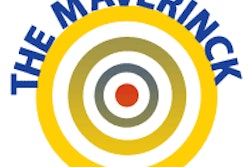
It's always a painful sensation when one realizes that a service or a product one pays for is overpriced and of inferior quality. At times I am asked to give a second opinion about imaging examinations, mostly MRI studies carried out in private offices in the U.S. They usually involve patients from Latin America who traveled to the U.S. because they believe that the health system in Miami, New York, or Chicago is better than in their home country. Many of them would be aptly and correctly served at home by well trained radiologists, even better than in the U.S.
 Dr. Peter Rinck, PhD, is a professor of diagnostic imaging and the president of the Council of the Round Table Foundation (TRTF) and European Magnetic Resonance Forum (EMRF).
Dr. Peter Rinck, PhD, is a professor of diagnostic imaging and the president of the Council of the Round Table Foundation (TRTF) and European Magnetic Resonance Forum (EMRF).Usually the quality of the studies I see is sufficient to make a diagnosis, but in a number of cases there is no reason to be proud of the radiological work. Equipment maintenance is not written with a capital M and image artifacts are common -- it seems that the more expensive the apparatus is the more artifacts you get. Sometimes one also wonders whether there is enough competence, experience, and professional integrity to choose certain kinds of studies, and to perform and evaluate them. However, it's not my business to discuss this with a patient or colleague who just wants my opinion about a certain study and diagnosis.
Often I am told what the patients were charged for their studies. Again, I don't comment on the prices, although sometimes I have to swallow hard. I've got a health insurance policy that covers treatment all over Europe and the rest of the world. It is not cheap. The U.S. is the only country that is explicitly excluded. For the U.S., one needs additional insurance, and because of the cost, some brokers even suggest air-evacuation back to Europe in situations that are not life-threatening. There is a chasm between the U.S. and the rest of the developed world that cannot be explained by the standard of medicine. There are more than enough studies underlining that U.S. citizens do not get better healthcare than patients elsewhere.
Nearly 20 years ago I wrote in one of my columns:
Two terms are important: "patient-driven," which means that the patient must be the center of medical thinking; and 'outcomes' because that is what is important for the patient. To many administrators, politicians, radiologists and industries, patient outcomes are secondary. We hardly know anything about the outcomes of what we are doing in diagnostics and therapy.1
This has not changed. Even worse, today the U.S. spends 20% of its gross domestic product (GDP) -- an estimated $2.7 trillion U.S. (2 trillion euros) for 2013 -- on healthcare. In the column I mentioned above, I referred to the status in 1990: at that time, expenditure was 10.7% of GDP. In the meantime, it has nearly doubled.
Earlier this year, there were several long and alarming articles about this problem in Time Magazine and the New York Times.2-5 As Elisabeth Rosenthal wrote in one of her three articles in the New York Times:
Americans pay, on average, about four times as much for a hip replacement as patients in Switzerland or France and more than three times as much for a Cesarean section as those in New Zealand or Britain. The average price for Nasonex, a common nasal spray for allergies, is $108 in the United States compared with $21 in Spain. The costs of hospital stays here are about triple those in other developed countries.3
And she continued:
Hospitals, drug companies, device makers, physicians and other providers can benefit by charging inflated prices, favoring the most costly treatment options and curbing competition that could give patients more, and cheaper, choices. And almost every interaction can be an opportunity to send multiple, often opaque bills with long lists of charges: $100 for the ice pack applied for 10 minutes after a physical therapy session, or $30,000 for the artificial joint implanted in surgery.3
The trend in Europe is similar. Medicine is turning into a for-profit market segment, and radiology is at the forefront, but not the leader.
As a potential patient, I have nothing against paying a fee to fellow physicians that also covers the salaries of their assistants and secretaries. However, I object to feeding unproductive, or even counterproductive, bureaucratic parasites in hospital administration, state health administration, in a grotesque "health" industry and -- above all -- insurance companies and banks. Increasingly and without pity, they bleed sick and helpless people dry -- bye, bye Hippocratic oath; what's left is business and self-interest. And why do U.S. health outcomes lag behind other countries?
As a physician, I think: Why should I fatten an overblown administration with my work? Why should a single medical doctor work to support a pernicious pack of pencil pushers and con men?
The health system in many European countries is better, but for how long? For the U.S., neither Steven Brill in Time Magazine nor Elisabeth Rosenthal in the New York Times offered a solution to this problem. I guess they know why. Personally, I have never been in favor of a state health system, but what the U.S. needs is a state-regulated system with state-set (low) reimbursement ceilings for medical services, a separation of physicians from the health management and insurance business, and a nationwide obligatory health insurance for all. In other words, a revolution that would change the entire social structure of the U.S.
Dr. Peter Rinck, PhD, is a professor of diagnostic imaging and the president of the Council of the Round Table Foundation (TRTF) and European Magnetic Resonance Forum (EMRF).
References
- Rinck PA. Rinckside -- Playing with numbers in the health care game. Diagnostic Imaging International. 1994;10(1):7, 55. http://www.rinckside.org/Rinckside Columns/1994 01 Playing with numbers in the health care game.htm.
- Brill S. Why medical bills are killing us. Time Magazine. 4 March 2013.
- Rosenthal E. The $2.7 trillion medical bill. New York Times. 2 June 2013. A1.
- Rosenthal E. American way of birth, costliest in the world. New York Times. 30 June 2013. A1.
- Rosenthal E. In need of a new hip, but priced out of the U.S. New York Times. 3 August 2013. A1.
The comments and observations expressed herein do not necessarily reflect the opinions of AuntMinnieEurope.com, nor should they be construed as an endorsement or admonishment of any particular vendor, analyst, industry consultant, or consulting group.



















